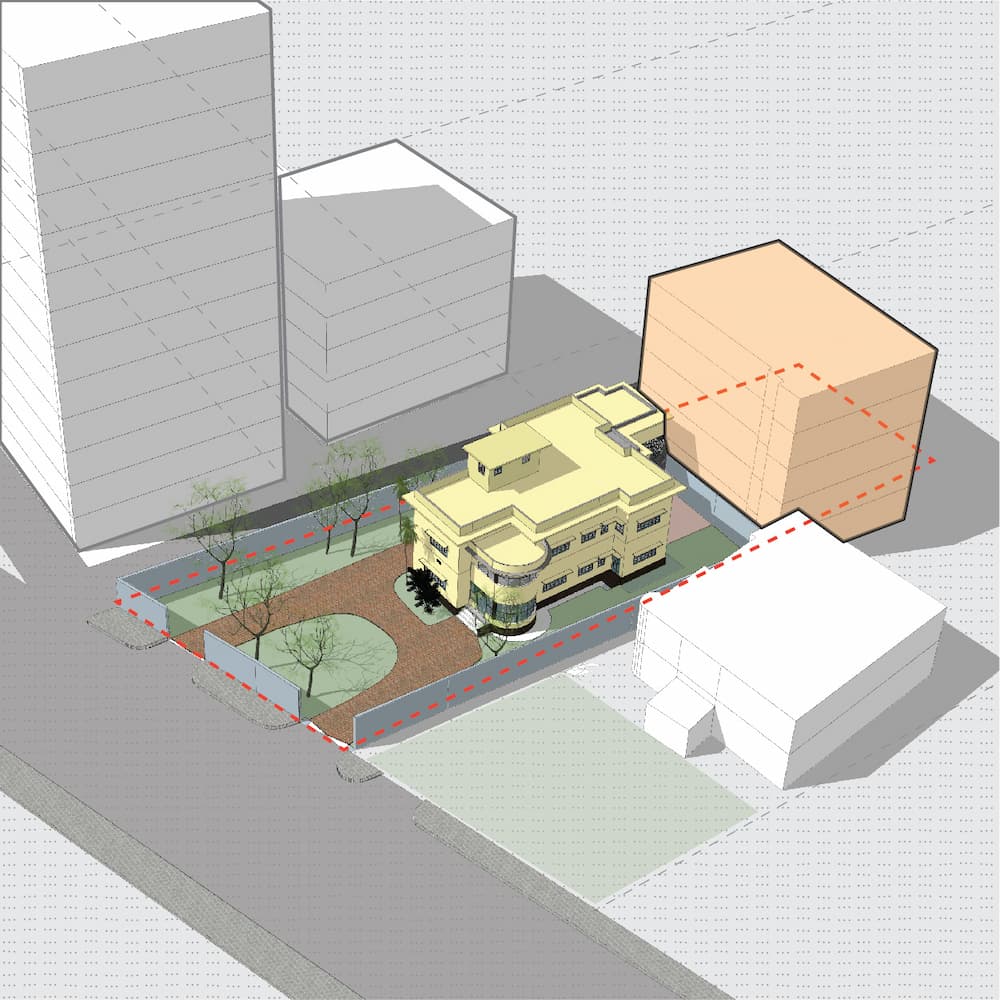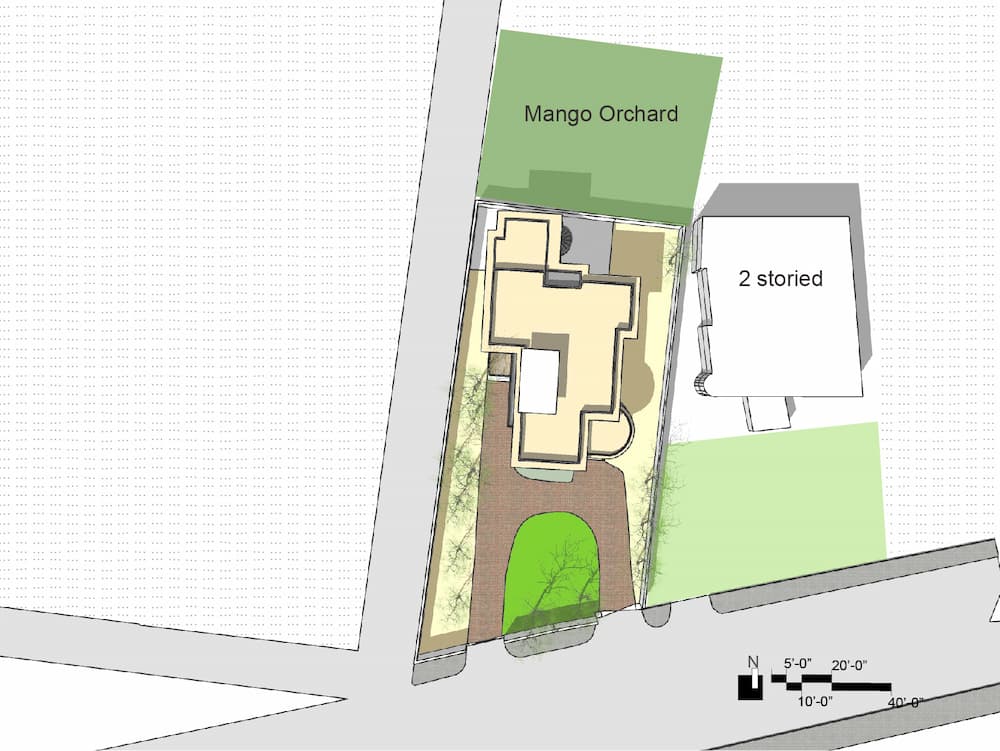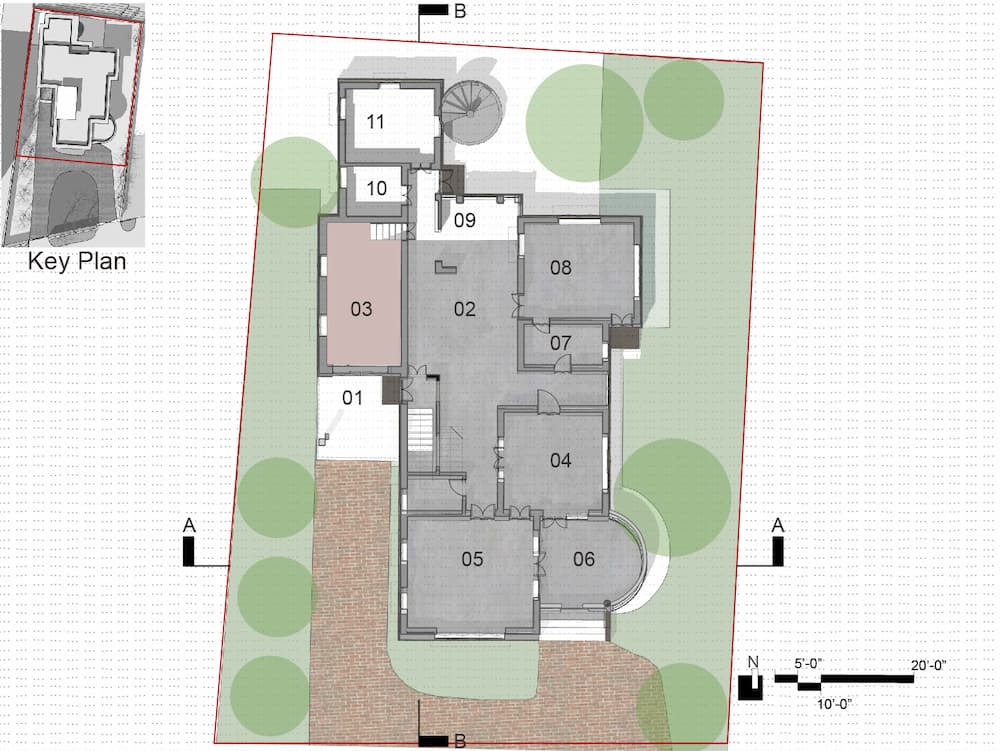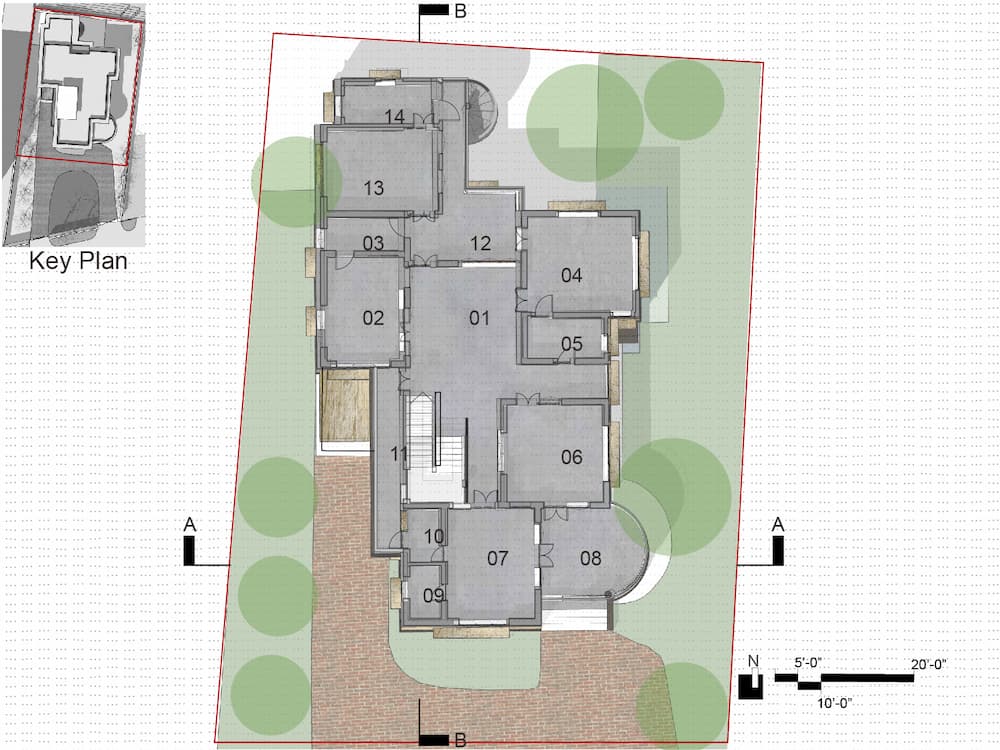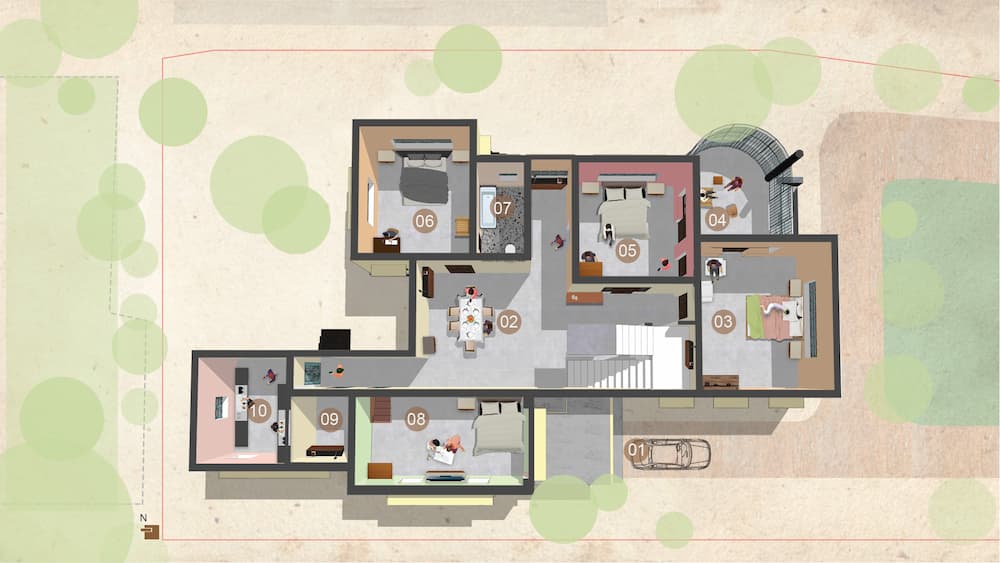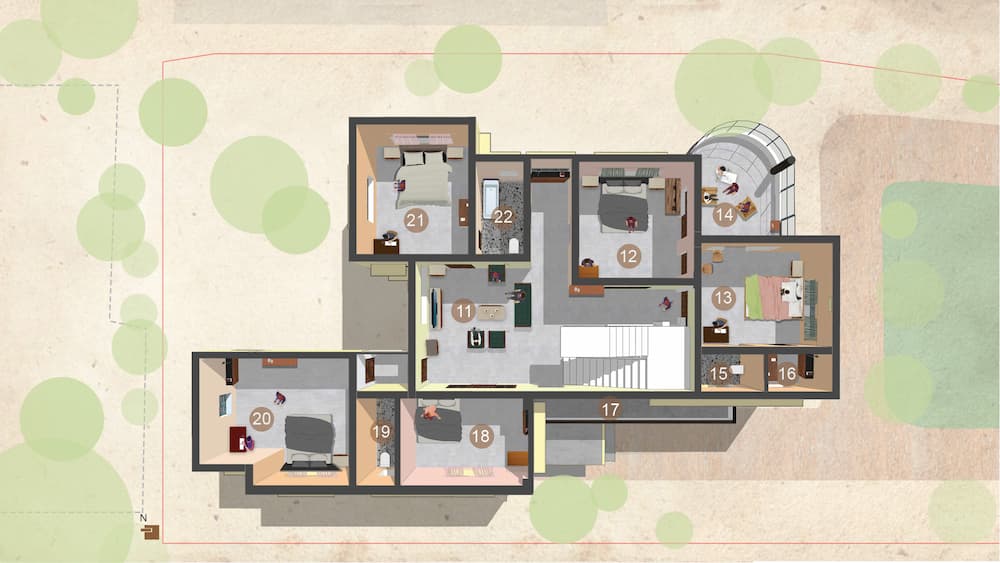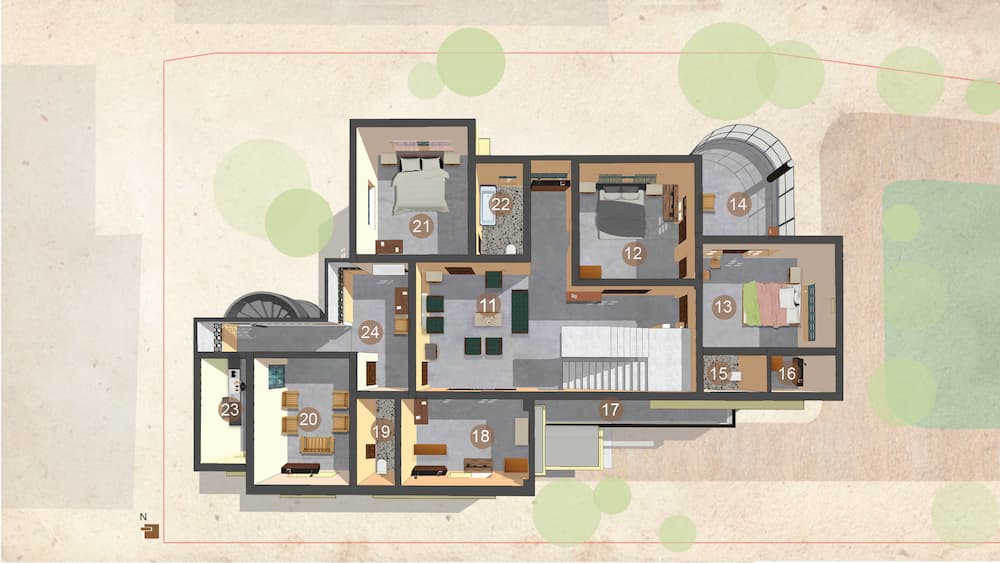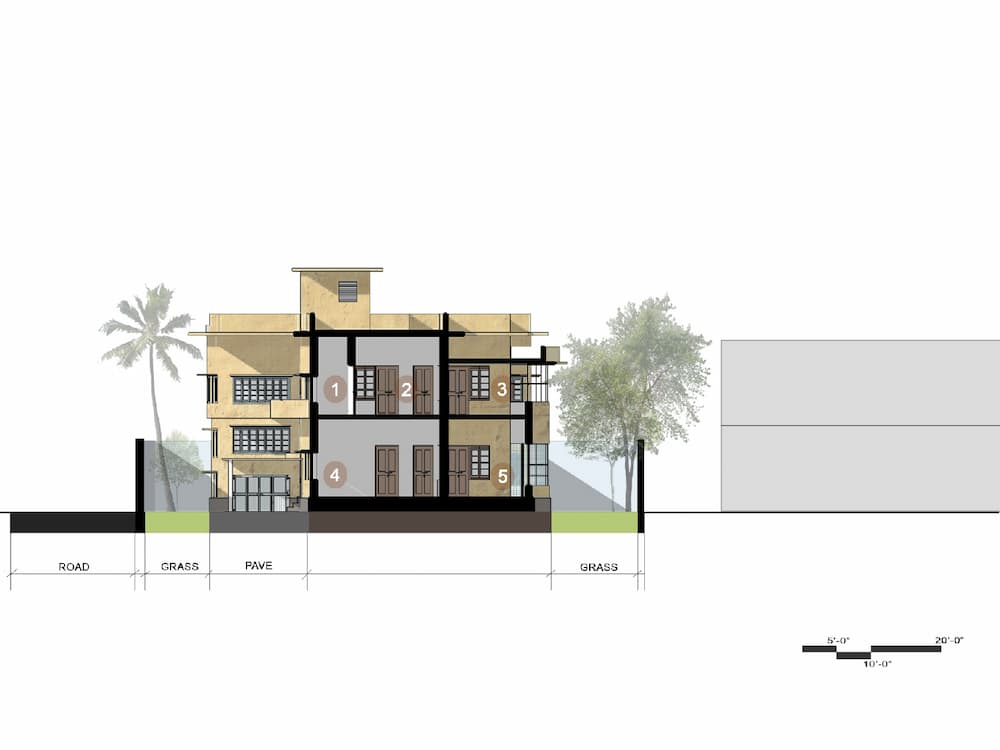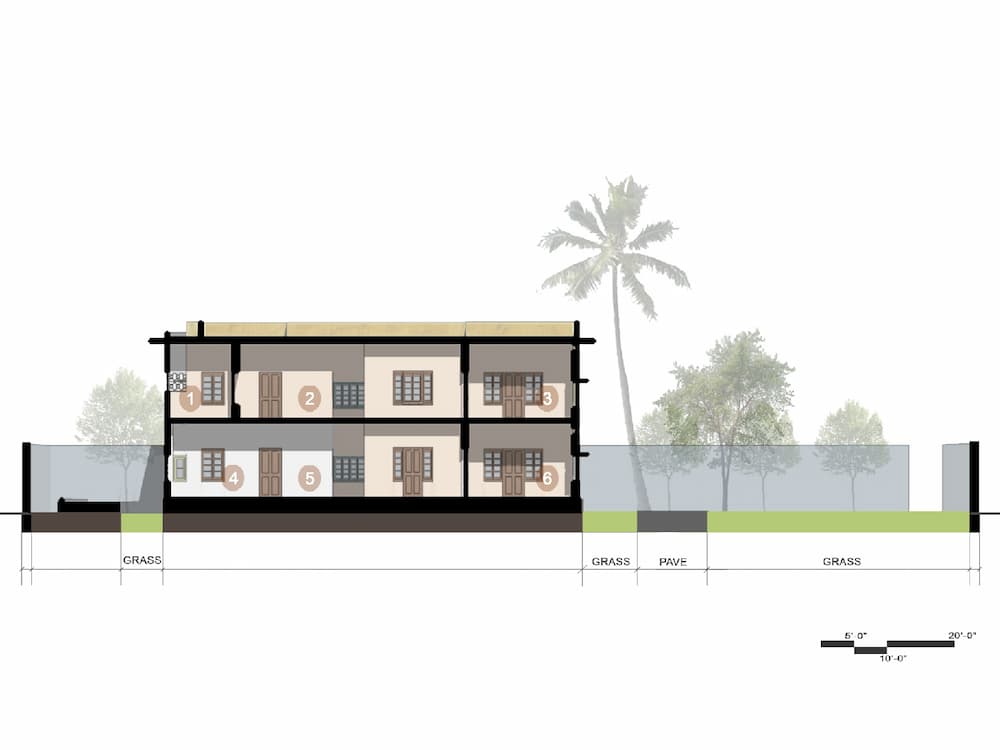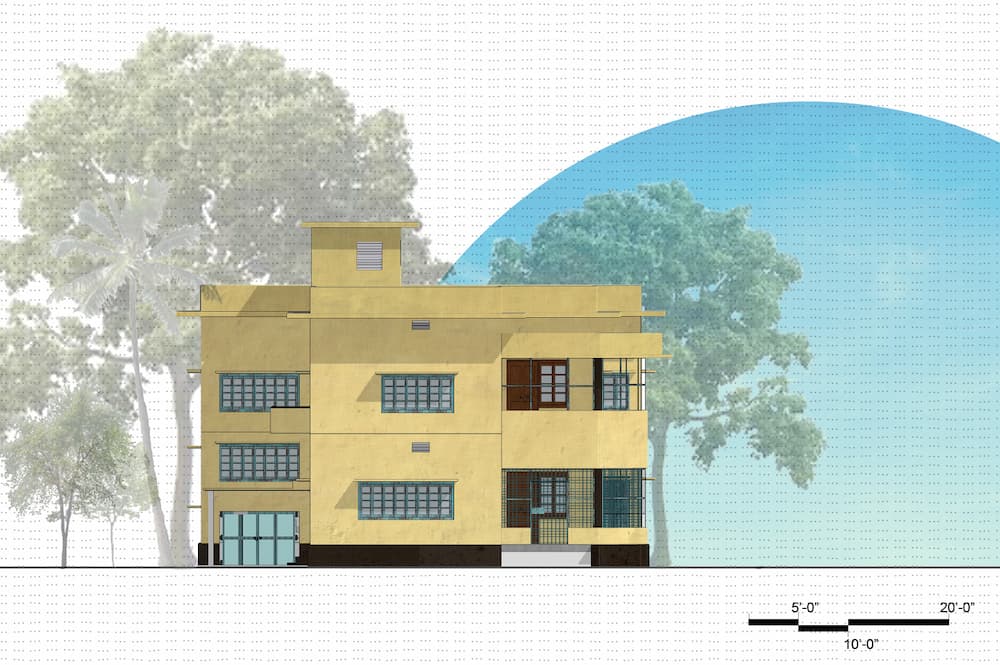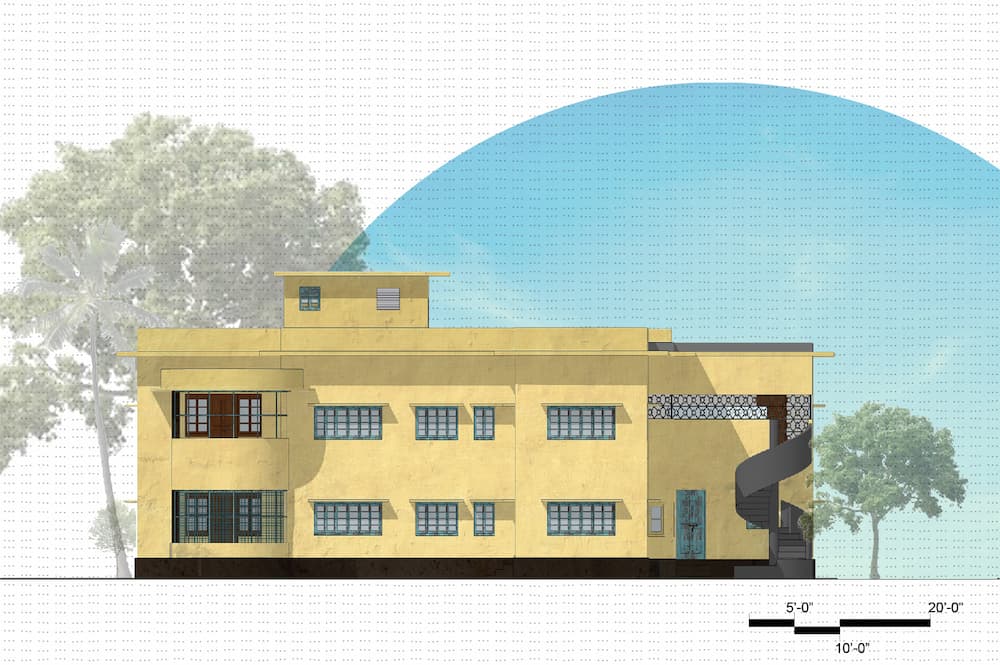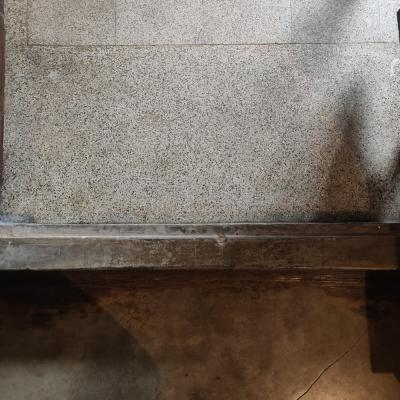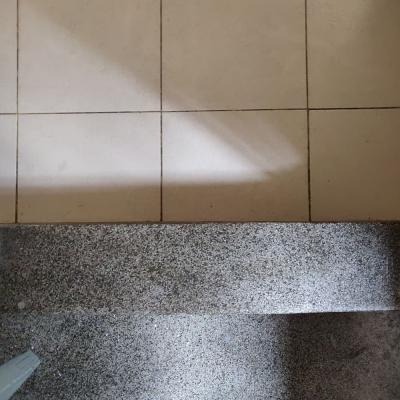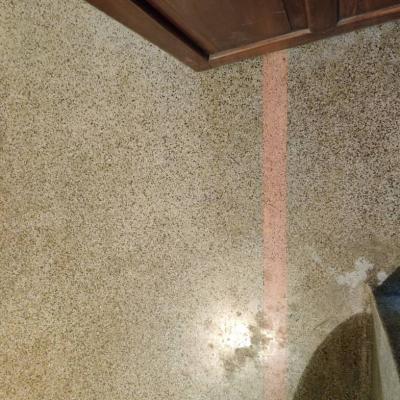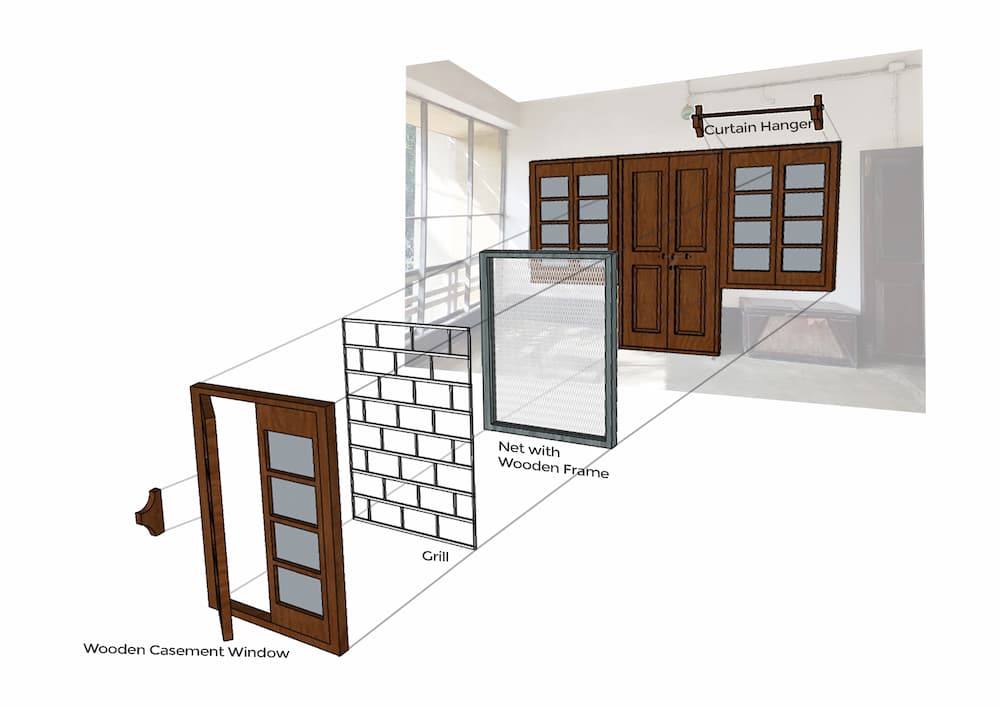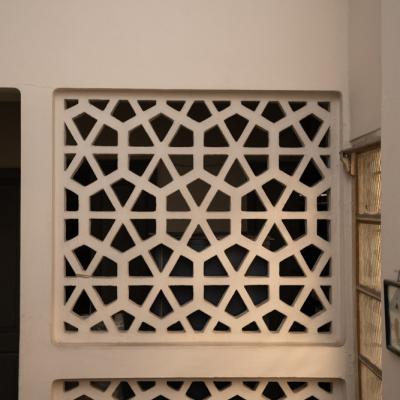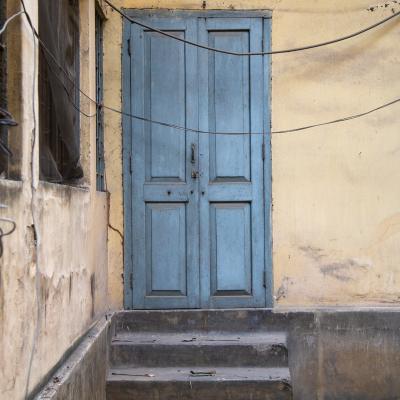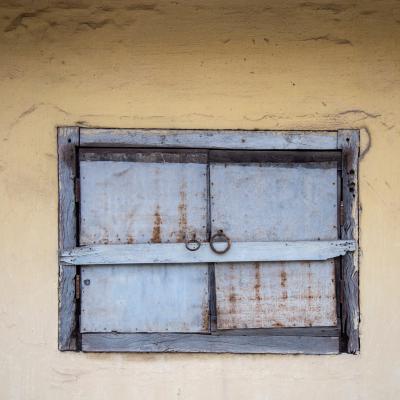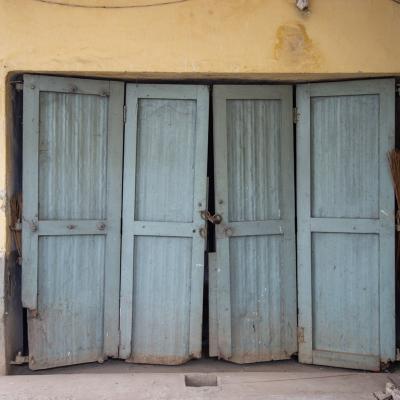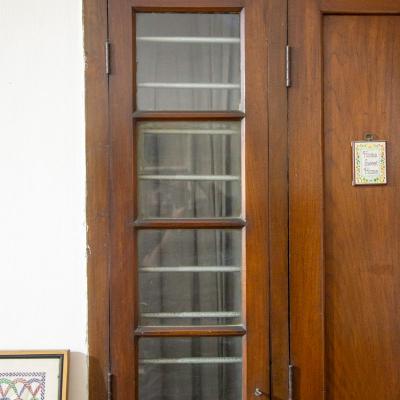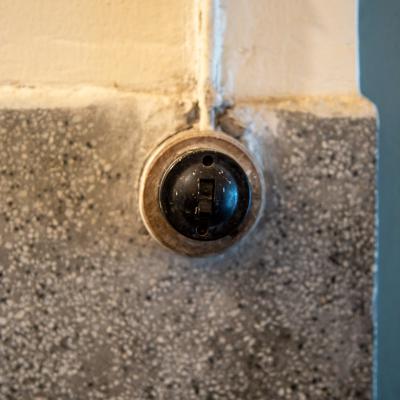Kabir House
Architecture
This page contains architectural drawings of the house in its surrounding context, the floor plans, use of spaces, section, elevation and other details. Also, there are some abstract visual representations of the stories of special features through collage drawing.
Present surroundings
Originally, a house with a lawn and orchard, and spacious verandas and large windows, and surrounded by lush greenery, today it is one of the few old houses in a neighborhood of multistoried buildings.
View of the Kabir house in surrounding context
Transformation of the surroundings
After a property division in the early 1980s, the orchard area in the north was developed by its owner to construct a multistoried apartment.
There has not been much change in the use of spaces within the layout of the house. At present, both the floors have unused or empty bedrooms, while some rooms are also used as storage for keeping belongings of the previous residents.
Ground floor plan at present
Legend: 1.Entry Porch, 2. Living Area, 3. Bedroom at 1000mm , 4. Bedroom (i), 5. Bedroom (ii) , 6. Round Verandah , 7. Toilet, 8. Bedroom (iii) , 9. Dining, 10. Bedroom (iv) , 11. Kitchen
First floor plan at present
Legend: 1. Living Area, 2. Storeroom, 3. Toilet, 4. Bedroom (i), 5. Toilet, 6. Bedroom (ii), 7. Bedroom(iii), 8. Verandah, 9. Storeroom ,10. Toilet, 11. Side Verandah, 12. Back Verandah, 13. Family Living, 14. Kitchen
Use of spaces
In the late 1950s, the family decided to extend the building on the northern side to transform the single unit house into two units. So a spiral staircase was added in the north to access the new kitchen on the upper floor. There was initially no wall at the entry. One could see the whole living space or reach the stairs on the right just after entering the house through the door on the west. So this wall separated the internal staircase for accessing the two units.
Use of the ground floor in 1952
Legend: 1. Entry, 2. Dining Room, 3. Bedroom, 4. Verandah, 5. Bedroom, 6. Bedroom, 7. Toilet, 8. Bedroom, 9. Servant Room, 10. Kitchen
Use of the ground floor in 2022
Legend: 1. Entry, 2. Living Area, 3. Dining Area, 4. Bedroom, 5. Verandah, 6. Bedroom, 7. Bedroom, 8. Toilet, 9. Bedroom, 10. Servant Room, 11. Kitchen
Use of the first floor in 1952
Legend: 11. Living Area, 12. Bedroom, 13. Bedroom of the original Owner 14. Verandah, 15. Toilet, 16. Storeroom, 17. Verandah, 18. Bedroom, 19. Toilet, 20. Bedroom, 21. Bedroom, 22. Toilet
Use of the first floor in 2022
Legend: 11. Living Area, 12. Bedroom, 13. Bedroom of the original Owner 14. Verandah, 15. Toilet, 16. Storeroom, 17. Verandah, 18. Storeroom, 19. Toilet, 20. Living room, 21. Bedroom, 22. Toilet, 23.Kitchen, 24. Verandah
Views through the building
Views through the building are often shown as ‘section’ in architectural drawings. Typically, a 'section drawing', shows the view of a structure as though it had been sliced in half or cut along another imaginary plane. These drawings show the internal layout and express the interrelation between interior spaces and exterior.
Exterior views of the house
The southern view of the house expresses the asymmetrical design of the house which has been designed to accommodate a large family on two floors with spacious verandahs and common spaces. And from the east side, one can see the long view of the house with an additional spiral staircase.
View from South
View from East
Details of the house
Materials
The house has been built with simple materials like cement floor finish in most cases, but in some places, different color mosaic floors were used. Mosaic textures have been used in the walls and floor of the toilets.
Windows and openings
One of the unique features of the house is its interior doors with wooden casement windows. All the windows have a grill and net with its frame. The wooden curtain hanger is also unique of its time.
Window details
The various kinds of openings - windows, doors, perforations, ventilators - have been photographed to give an idea of the type of building technology and materials used in the particular period that a house was built in.
Special features
There are some special features in the house which reflect the unique characteristics of construction and lifestyle of the early times.
Artistic representation
The south facing circular verandah was the favorite space of the house. It provided a space for gathering and connected to the outside landscape.
The open and inviting living space was like a hub that connected to other rooms and floors of the house.
Various changes which were adopted from generation to generation speak about the characteristics of a joint family. Although a little withered after years of not being in full use, the house is still a precious memory to the members of the family of Kabir House.
Exploring the house
A heritage building need not be a monument or landmark building; it can be representative of an epoch or period in the history of the city in many ways. Through this project, we have captured various perspectives in the form of virtual tours, timelines, stories, photographs, architectural features and locations.
Use the buttons belows to navigate to the details pages.

